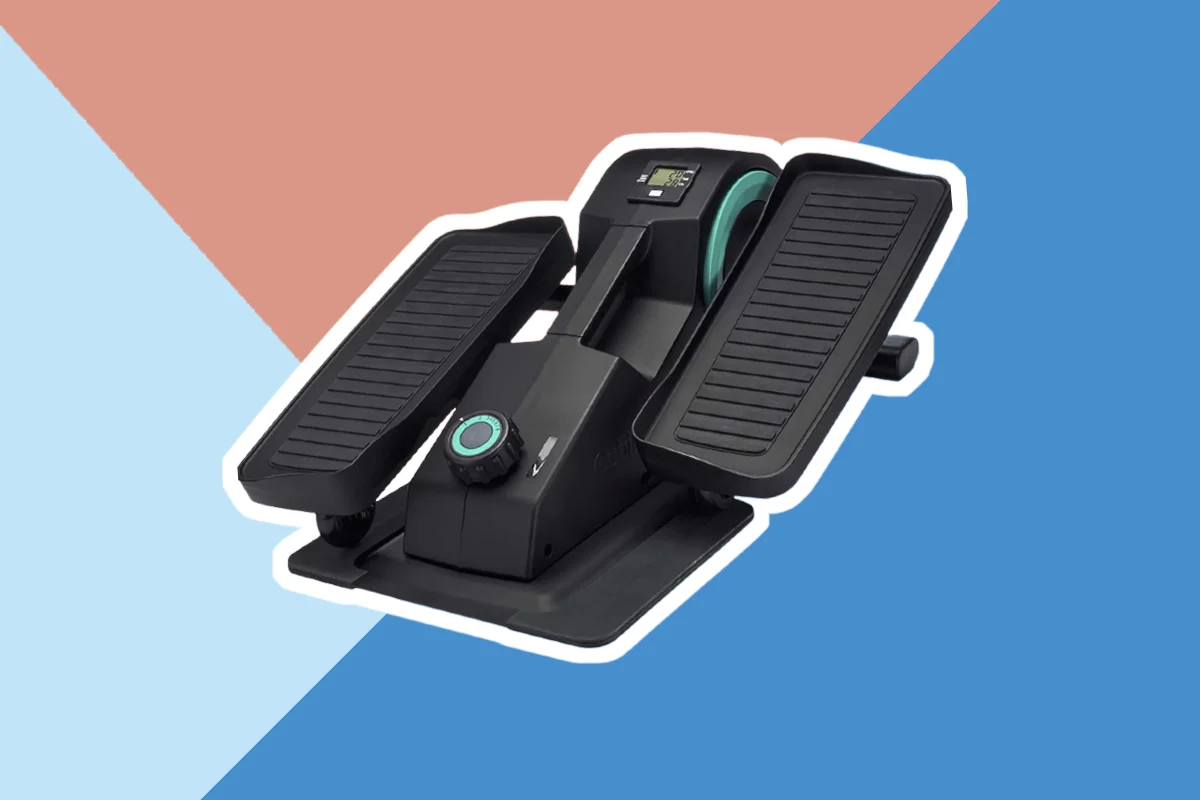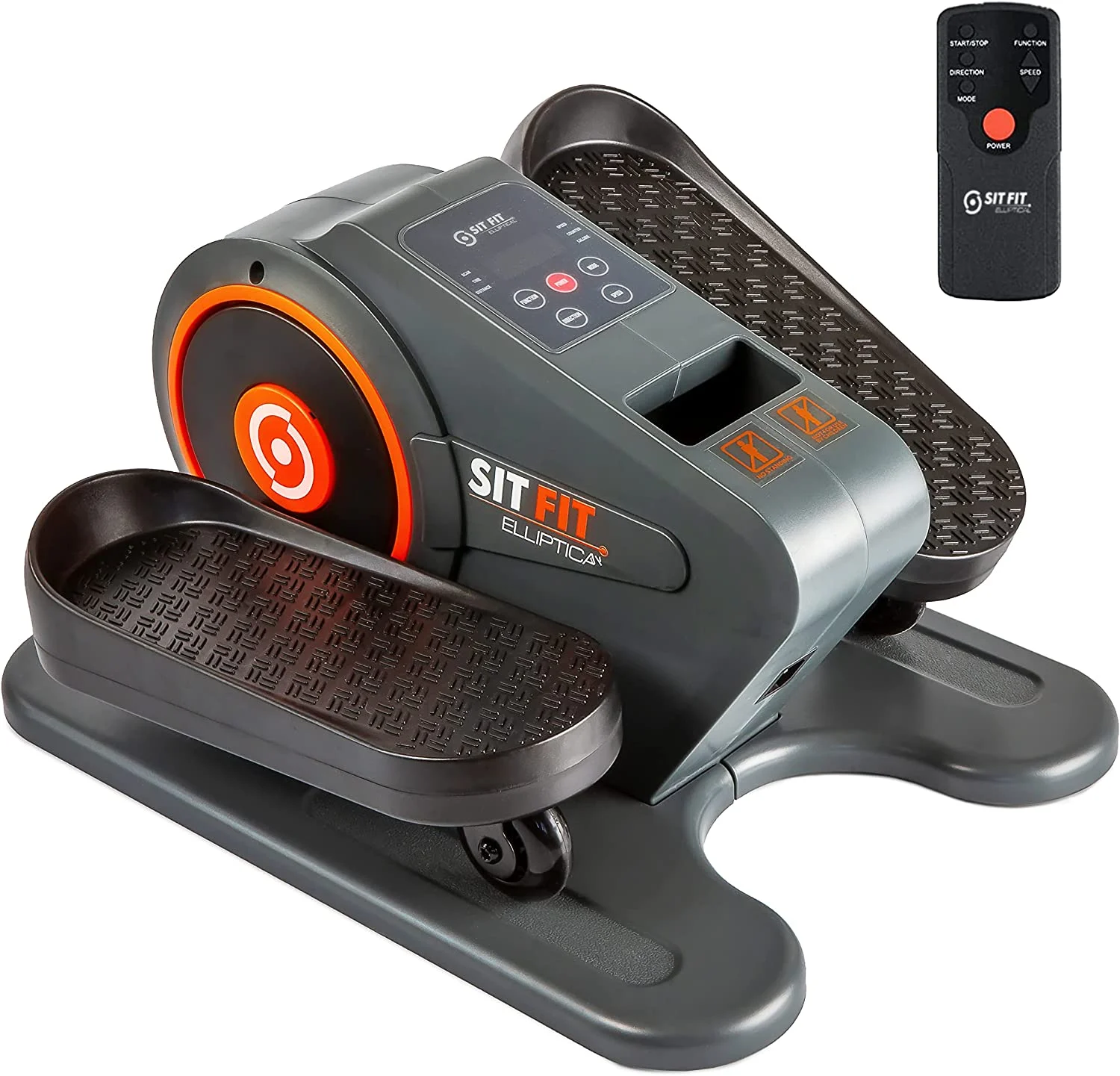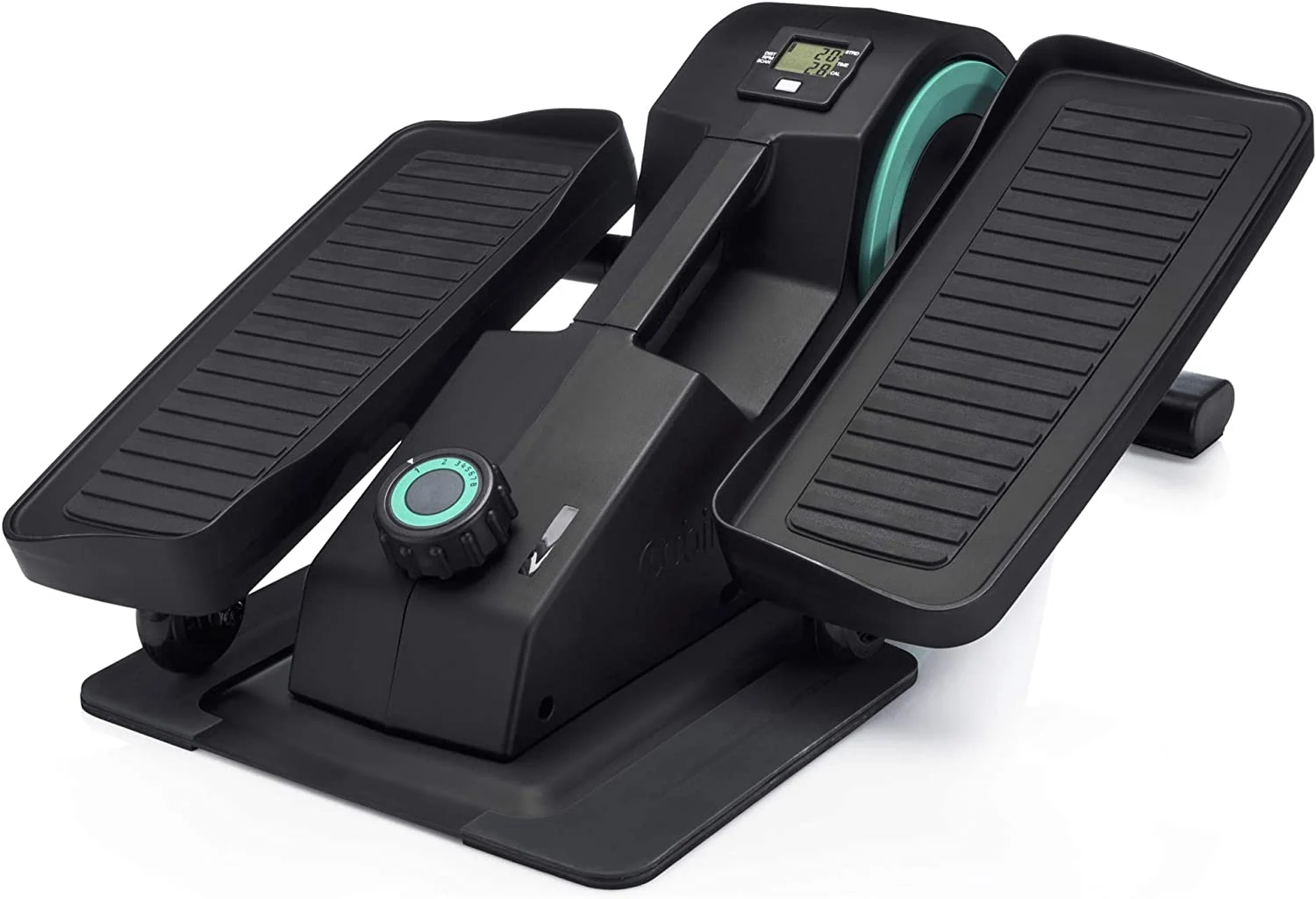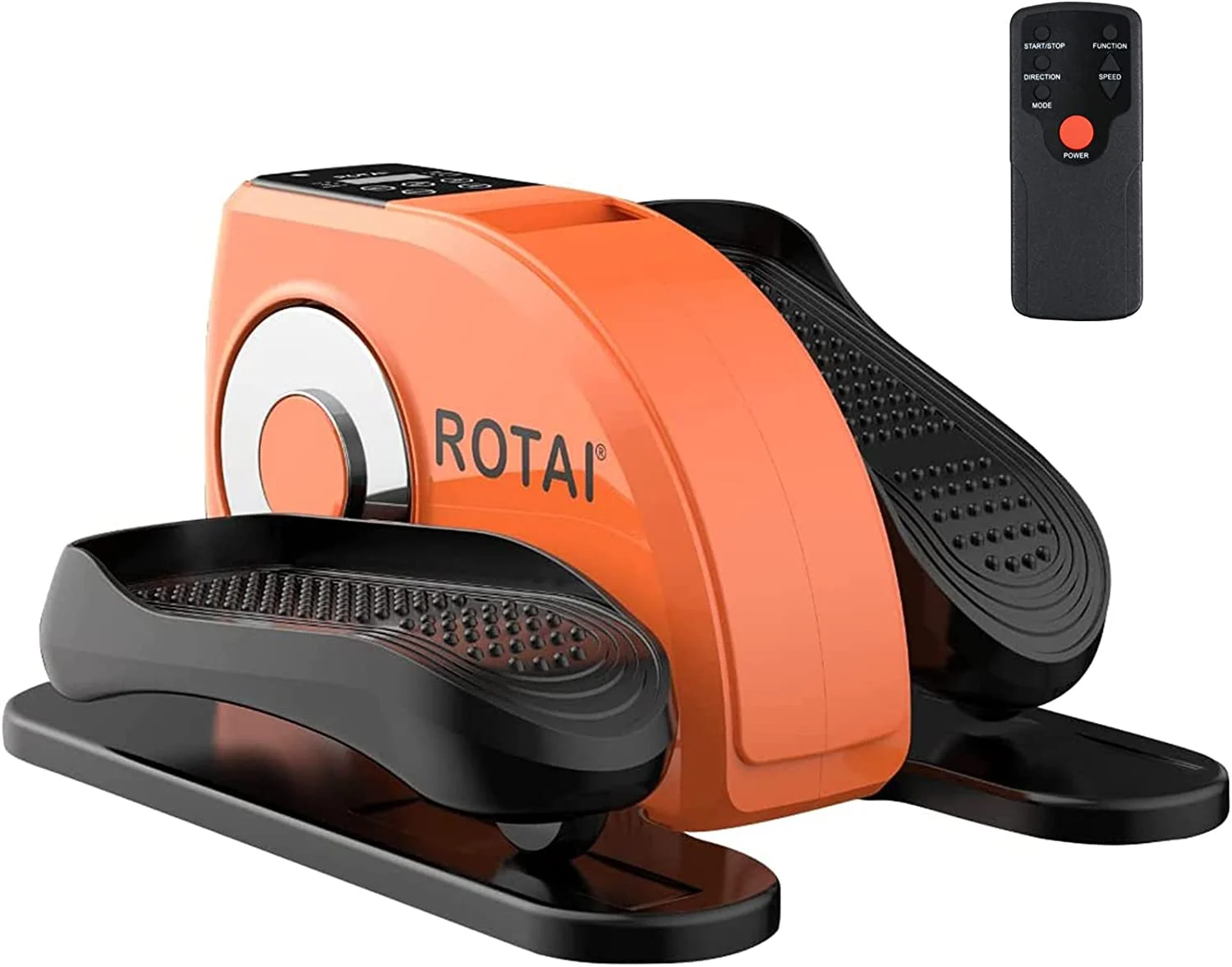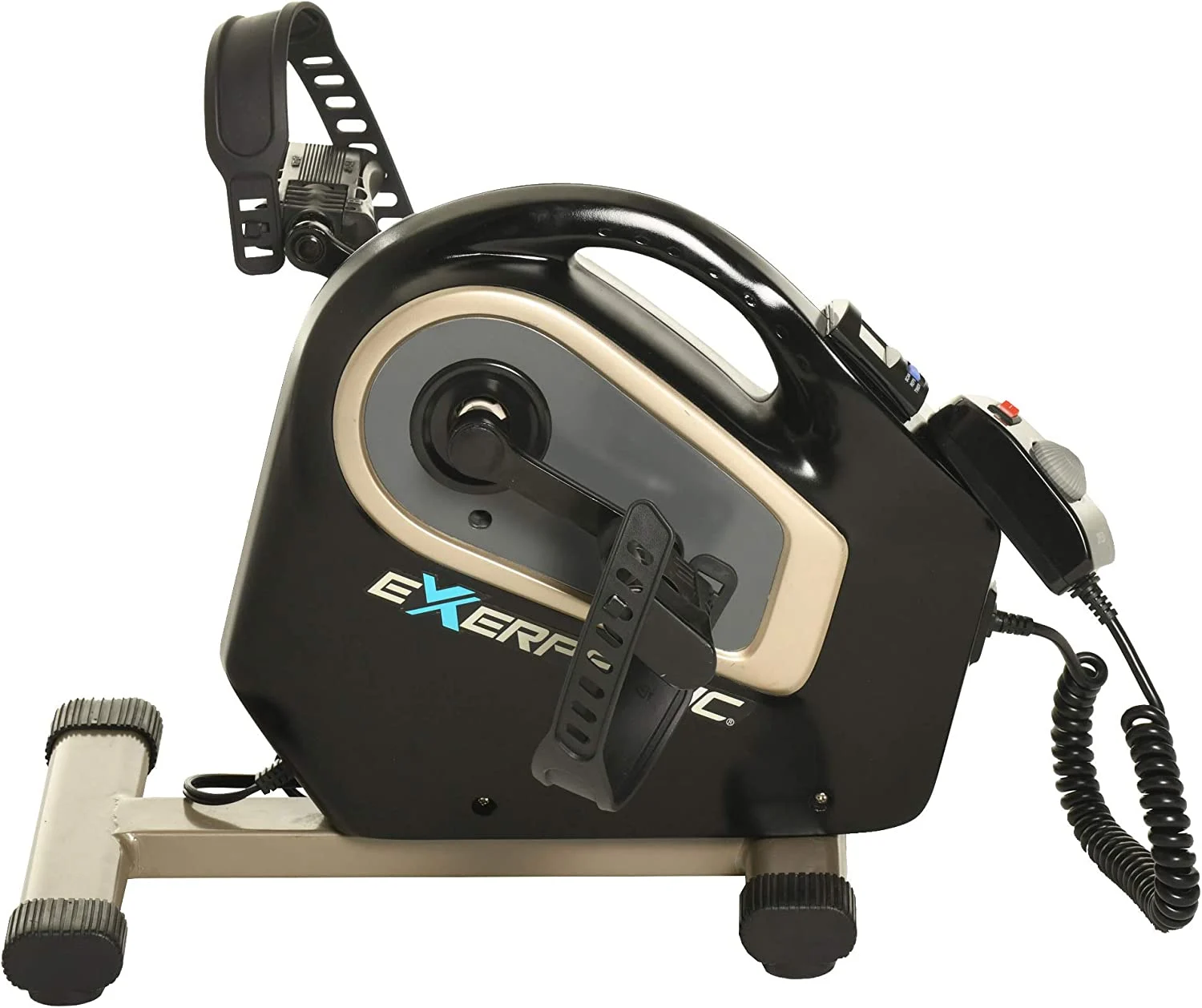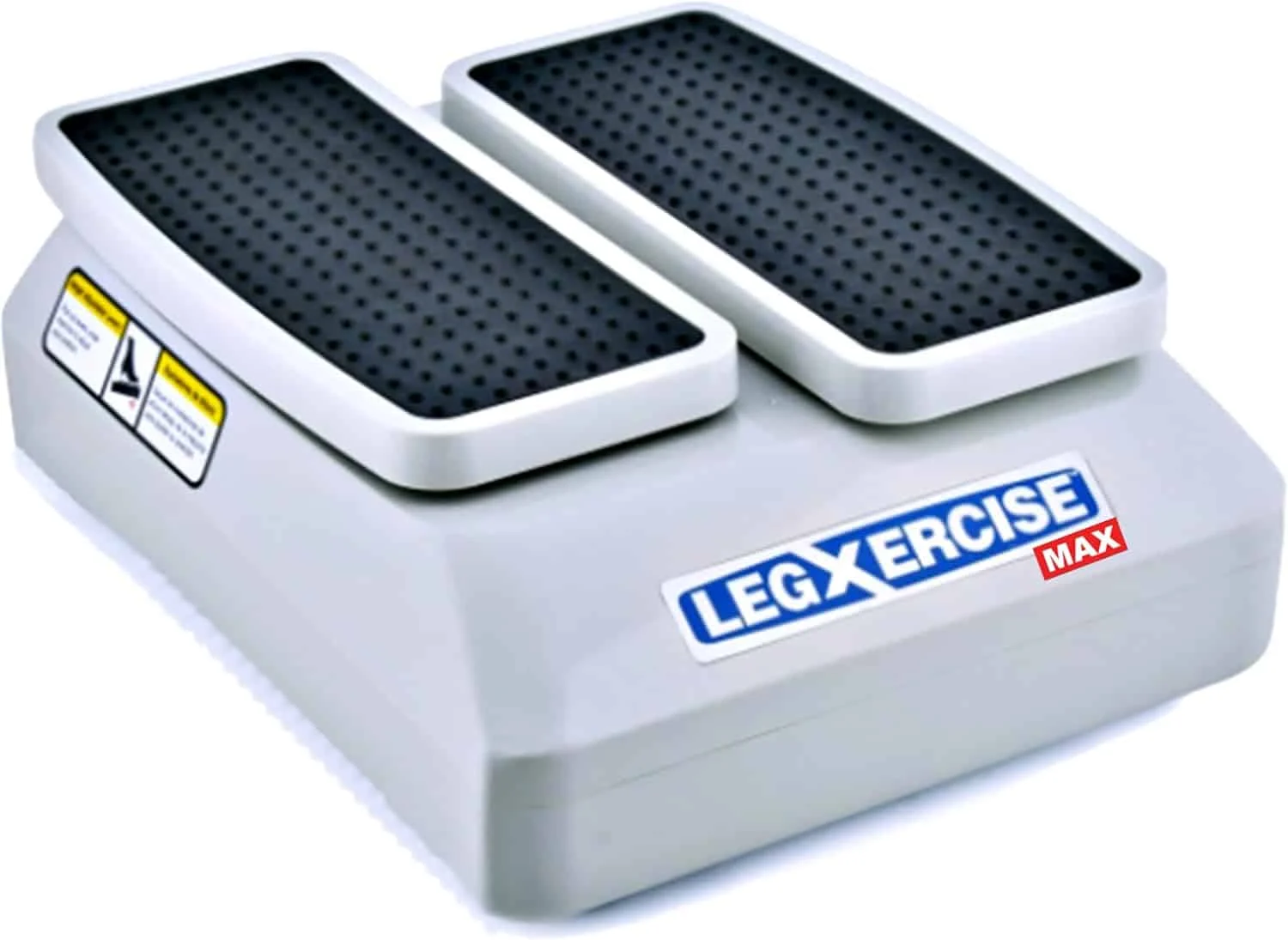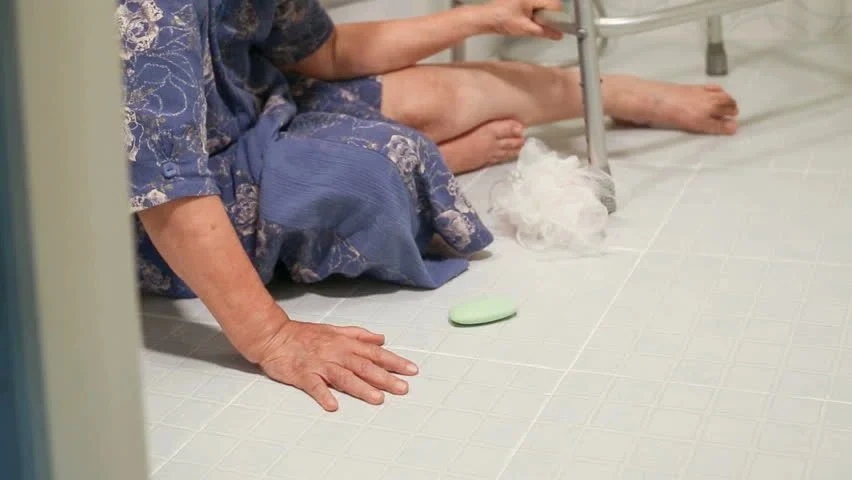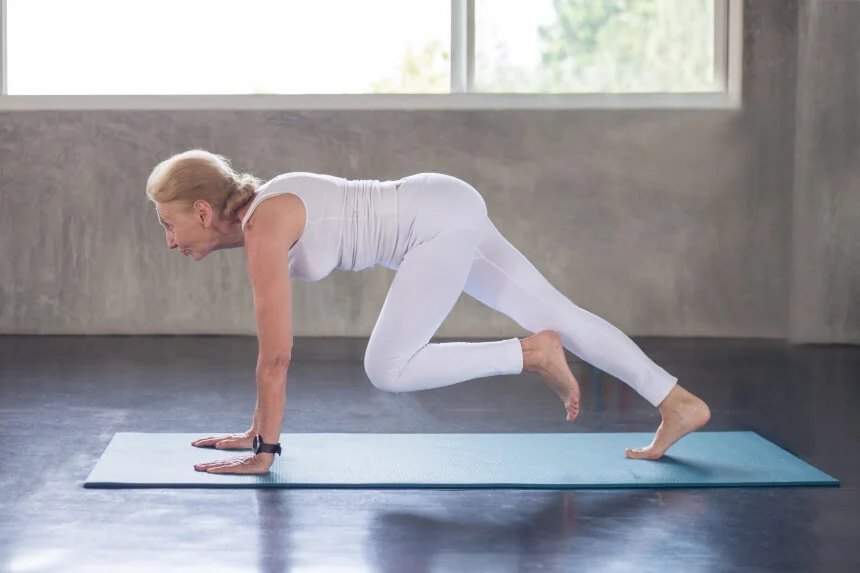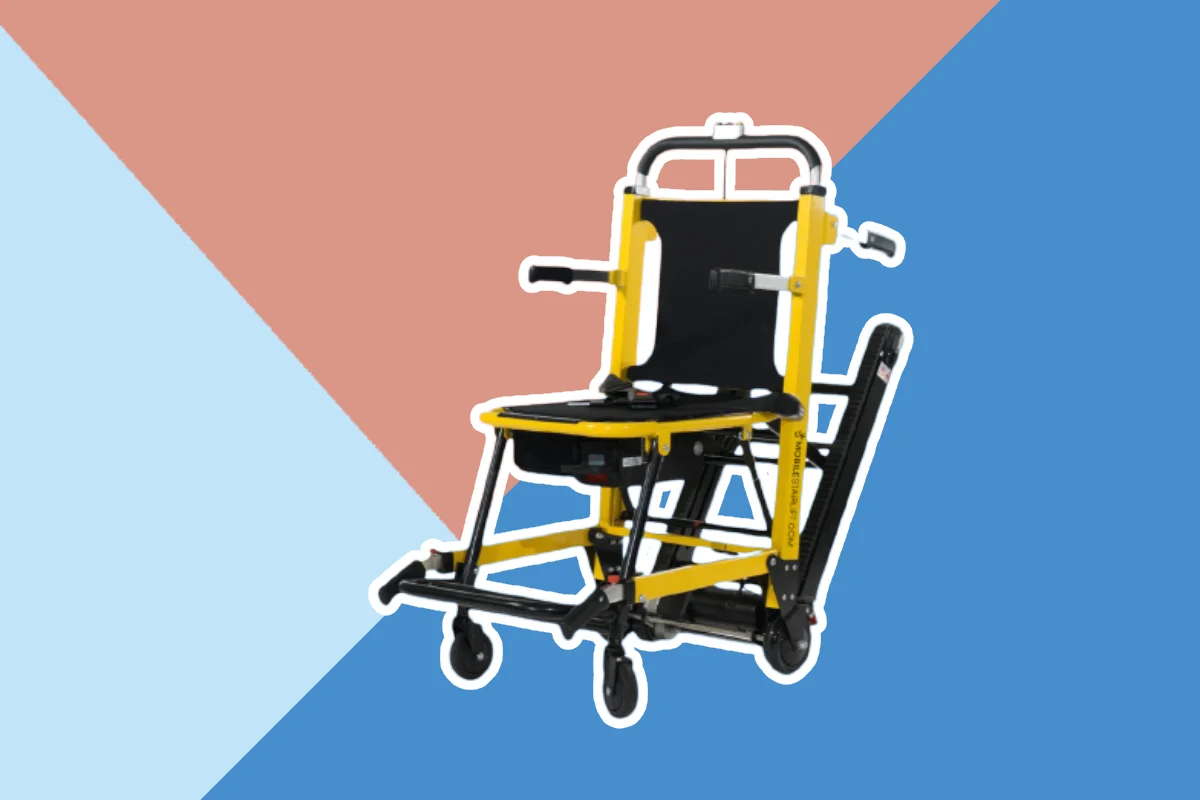After rigorously testing and reviewing over 30 products, we’ve identified the 6 best leg exercisers for elderly users. Our Editor’s Choice, the SITFIT Sit Down and Cycle!, stands out for its automated functions and user-friendly design. Whether you need a passive exerciser for rehabilitation, a compact option for RV travel, or a premium model with advanced features, this guide covers every need and budget.
Roughly 30% of adults over 70 struggle with walking or standing comfortably. If you’re among them, you’ve likely noticed how reduced mobility affects everything from daily tasks to your overall health. Here’s something many seniors don’t realize: older adults experience approximately 25% lower leg blood flow compared to younger people living similar lifestyles. This decreased circulation can lead to swelling, discomfort, and even more serious complications over time.
The good news? You don’t need to walk miles or risk falls to keep your legs healthy. Leg exercisers for seniors offer a simple, seated solution that improves circulation, maintains muscle tone, and supports independence, all from the comfort of your favorite chair.
SeniorFitness is reader-supported. We may earn a commission through products purchased using links on this page. Learn more about our process here
TL;DR
This guide reviews 6 top-rated leg exercise machines for seniors that improve circulation, mobility, and independence. Options range from budget-friendly pedal exercisers under $100 to premium motorized models with multiple speeds and remote controls. Our Editor’s Choice is the SITFIT Sit Down and Cycle!, an automatic under-desk exerciser with ergonomic design. Other standout picks include the Cubii JR1 with eight resistance levels, the ROTAI Bike Pedal Exerciser perfect for travel, and the LegXercise MAX for home use. Benefits include better blood flow, reduced leg pain, gentle rehab support, and safe low-impact workouts. Discover which leg exerciser fits your needs and how it can transform your daily activity.
Quick Summary
- Editor’s Choice: SITFIT Sit Down and Cycle! A motorized under-desk leg exerciser with multiple automatic speeds and remote control, ideal for seniors with limited mobility who want effortless circulation support.
- Upgrade Pick: Cubii JR1 Eight resistance levels, built-in LCD for tracking, and whisper-quiet operation make this premium mini elliptical perfect for active seniors seeking a challenge.
- Best Leg Exerciser for Travelling Elderly: ROTAI Bike Pedal Exerciser Lightweight automatic pedal machine with remote control that fits easily in an RV or suitcase for seniors who exercise on the go.
- Best Value: Exerpeutic 2000M Affordable motorized leg exerciser featuring wide non-slip pedals, remote control, and a convenient carry handle without breaking the bank.
- Best for Home Use: LegXercise MAX Compact, ergonomic design with five speeds and continuous gentle motion makes this the ideal at-home passive leg exerciser for daily use.
- Best for Passive Excersise: LegActivator The Seated Leg Exerciser & Physiotherapy Machine for Seniors Seated physiotherapy leg machine with two speed settings (max 1 MPH) and comfortable foot pads, perfect for circulation improvement and gentle rehab.
Top 6 Leg Exercisers for Elderly Review 2025
1. Editors Choice
SITFIT Sit Down and Cycle!
Features
- Overall dimensions:20 x 17 x 11.5 in
- Weight:16 lbs
- Speeds:5
- Max speed:1.2 mph
- Warranty:90-day limited
More features: bi-directional, remote control and remote holder, manual controls, carrying handle, non-slip pedals, digital screen
The SITFIT Sit Down and Cycle leg exerciser is our editor’s choice because it offers exceptional ease of use, thanks to its automated functions. This motorized leg exerciser can work with auto control when you want it. It can also work with manual control. So, the choice is up to you. Furthermore, this device boasts a control panel that delivers smooth operation. And there’s a remote control that helps you to choose speed, program, or direction without any issue. On top of that, this leg exercise machine for elderly features non-slip pedals that keep you safe during your fitness sessions.
If you’re looking for a complete leg exerciser, you should consider the SITFIT Sit Down and Cycle! It’s the total package. Not many leg exercisers for seniors feature a digital monitor like this product. Its monitor displays distance, speed, calories burned, and time to keep you updated in real-time. As if that wasn’t enough, this fitness tool sports a phone holder that keeps your phone safe while you cycle. Moreover, this leg exerciser is ideal if you want a product that offers multiple moving speeds. This device provides up to five speeds, giving the elderly many exercise options.
Why are we impressed?
- The remote control makes it easy to choose speed, program, and direction
- Digital monitor display relevant exercise information to aid motivation
- Non-slip pedals ensure optimum safety
- Allows seamless change to manual or auto control
- Handy phone holder
What negatives must you be aware of?
- It slides around during exercises, forcing users to find something to hold it
2. Upgrade Pick for Seniors Pedal Excercisers
Cubii JR1
Features
- Overall dimensions:23.15 x 17.56 x 10 in
- Weight:29.6 lbs
- Resistance levels:8
- Warranty:30-day limited
More features: 250 lbs weight capacity, LCD screen, Cubii Communitii access, wheel stoppers included
At first glance, you can tell that the Cubii JR1 leg exerciser is a premium fitness tool. It boasts a classy black and blue design that will keep anyone addicted to it. Beyond this device’s look, it features a built-in LCD that lets you keep track of your fitness progress. This display shows calories burned, distance traveled, strides pedaled, and more. Furthermore, this leg exerciser has wheel stoppers to keep your fitness tool from skidding. These features ensure that you have a comfortable experience using the device.
Moreover, the Cubii JR1 leg exerciser beats the SITFIT Sit Down and Cycle exerciser in terms of resistance options. While the Cubii leg exerciser offers eight resistance levels, the SITFIT leg exerciser offers only five. So, if you’re looking for an upgrade, the former is suitable, although it’s more expensive. Also, the Cubii exerciser does not slide around like the SITFIT exerciser, thanks to its wheel stoppers. The former also has the edge with access to the Cubii mobile app, which helps to keep your fitness data. However, the Cubii exerciser’s 30-day limited warranty is inferior to the SITFIT exerciser’s 90-day warranty.
Why did it make our list?
- Eight resistance levels offer varying exercise options
- LCD helps to track fitness progress in real-time
- The Cubii mobile app keeps fitness data secure for a long time
- Wheel stoppers ensure stable exercise sessions
- It can accommodate up to 250 lbs
What is not ideal about it?
- It squeaks, which can be frustrating if it is used in a quiet house.
3. Best Travelling Pedal Excerciser for Seniors
ROTAI Bike Pedal Exerciser
Features
- Overall dimensions:19.7 x 17.5 x 11 in
- Weight:15 lbs
- Speeds:4
- Max speed:1.25 mph
- Warranty:2-year limited
More features: bi-directional, remote control, manual controls, auto-workout, digital screen, ABS plastic exterior, shiatsu pedals, skidproof bottom
The ROTAI Bike Pedal Exerciser is another device that impressed during our testing process. In fact, it is the best leg exerciser for traveling elderly. Why’s that? This product has every convenient feature seniors need in a fitness tool. It works in two modes; manual and automatic. For the automatic mode, plug in the device, and it starts working. And you can use an included remote control to operate the machine while you sit and relax. Additionally, this leg exercise equipment for elderly features an LCD that tracks exercise time, speed, calories burned, working pattern, distance, and counter.
Moreover, the ROTAI Bike Pedal Exerciser has more modes than the Cubii JR1 leg exerciser, which offers only an automatic mode. That means you can use the ROTAI exerciser while it’s plugged in and when it’s not. Although this device has only four moving speeds compared to the Cubii exerciser’s eight, it is the cheaper option. Also, the ROTAI exerciser sports silent wheels that work quietly, making them suitable for office and travel, but that’s not the case with the Cubii exerciser’s squeaking wheels. Furthermore, the ROTAI exerciser’s two-year warranty is more generous than the SITFIT Sit Down and Cycle! and Cubii JR1 leg exerciser’s warranty offers.
What stands out?
- Manual and auto workout modes give flexible exercise options
- Remote control offers seamless operation
- LCD shows vital exercise details such as distance, speed, calories burned, etc.
- Shiatsu pedals stimulate feet muscles and aid circulation
- Four defined sponges in the bottom ensure no skidding when used on the plane
What cons did we manage to find?
- It starts in reverse mode, which some users may find annoying
4. Best Value Pedal Excerciser
Exerpeutic 2000M
Features
- Overall dimensions:21 x 18.2 x 14.5 in
- Weight:19 lbs
- Speeds:7
- Max speed:1 mph
- Warranty:1-year limited
More features: 4.7-in wide pedals, remote control with 70.8-in cord, motor auto-stop, non-skid mat included, carrying handle
The Exerpeutic 2000M leg exerciser offers the best value of the best leg exercise machines for seniors we considered during our testing process. Not only is it reasonably priced, but it also has many impressive features. For example, the foot exercise machine for elderly uses a DC motor drive system to move your legs back and forth. Apart from that, this leg exercise equipment for seniors sports large, foldable pedals that will make your feet sit comfortably. And if that wasn’t enough, the pedals feature adjustable straps that ensure that your feet never slip during exercises. Plus, a handheld speed controller helps you adjust the exerciser’s speed with relative ease.
Moreover, the Exerpeutic 2000M is cheaper than top products like the SITFIT Sit Down and Cycle!, Cubii JR1 leg exerciser, and ROTAI Bike Pedal Exerciser despite having similar or better features in some cases. For instance, the Exerpeutic 2000M has a non-skid floor mat that ensures the machine stays in one place during exercises, but the SITFIT Sit Down and Cycle does not have that luxury. Also, none of the more expensive products, like the Cubii JR1 leg exerciser and ROTAI Bike Pedal Exerciser, have straps that prevent seniors’ feet from slipping. Interestingly, you can use the Exerpeutic 2000M for arm exercise too. In contrast, other products exercise only your legs.
What are its best features?
- Built-in carry handle ensures easy transport
- Non-skid floor mat provides stable exercises
- Adjustable straps on the pedals prevent feet from slipping
- Intuitive speed controller
What could be improved?
- There’s no place to rest the corded speed controller while exercising, which affects the user experience
5. Best Home Use Pedal Excerciser for Seniors
LegXercise MAX
Features
- Overall dimensions:18.25 x 16 x 5.25 in
- Weight:8.8 lbs
- Speeds:5
- Max speed:1.25 mph
- Warranty:1-year limited
More features: ergonomic footpads, 2-way movement, folding legs, remote control, ABS plastic exterior, 4.9-foot power cord length, 8.25 foot remote working distance
The LegXercise MAX is compact size makes the machine the best for home use. Not to mention, this fitness device sports an ergonomic design and is lightweight. So it’s easy to carry around the house for exercise and storage. Besides, you’ll get durable use with the top-grade steel and ABS plastic frame. With the five adjustable speed levels, you’ll always find a speed that matches your pace. And you can switch between the speed options using a remote control or the machine’s screen.
Even though top products such as the Cubii JR1 leg exerciser, ROTAI Bike Pedal Exerciser, and Exerpeutic 2000M leg exerciser offer remote controls, none of them has a touchscreen like the LegXercise MAX. This touchscreen ensures seamless control. As if that wasn’t enough, this exerciser boasts folding legs that you won’t find on the SITFIT Sit Down and Cycle! or the ROTAI exerciser. These folding legs let you use the machine flat on the ground or with elevated feet. Additionally, this elderly leg exercise machine has more speed levels than the ROTAI exerciser.
What do we love it for?
- Portable and lightweight for seamless home use
- Touchscreen eases control
- Five speed options help to make steady progress
- Folding legs provide two methods of use
What were we disappointed with?
- Some users may find even the fastest speed of the leg exerciser too slow for them
6. Best Passive Leg Excerciser for Seniors
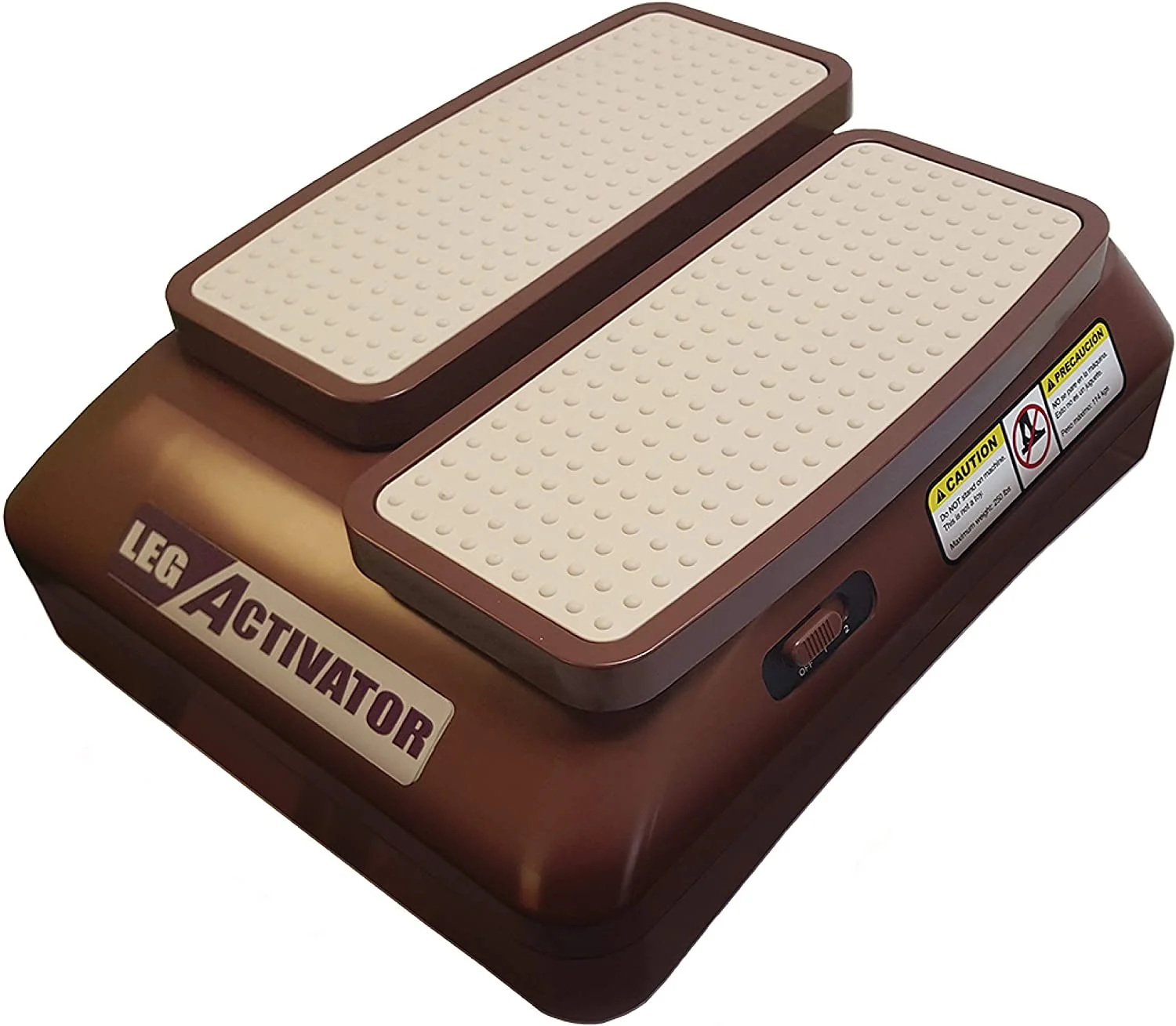
Amazon
LegActivator The Seated Leg Exerciser & Physiotherapy Machine for Seniors
Features
- Overall dimensions:17.75 x 14 x 7.75 in
- Weight:9.75 lbs
- Speeds:2
- Max speed:1 mph
- Warranty:none
More features: passive exercise, skid-proof pedals, fots for 110W output
The LegActivator The Seated Leg Exerciser & Physiotherapy Machine is the best option for passive exercise because it nicely activates your mobility and improves your blood circulation with precise continuous movements. It features a compact design that makes it suitable for office and home use; there is no limitation. And if that doesn’t impress you enough, the sitting exercise machine for elderly’s quick operation will. It starts right after you plug it into a power outlet. Moreover, this exerciser offers two speed settings; 1410 and 1650 steps in 30 minutes.
With a maximum speed of 1 mph, the LegActivator The Seated Leg Exerciser & Physiotherapy Machine is slower than the Soozier Seated Electric Leg Exerciser and ROTAI Bike Pedal Exerciser, making it more suitable for passive exercise. This device also features skid-proof pedals, which are better than the SITFIT Sit Down and Cycle! Exerciser’s skidding pedals. So, you can count on your fitness machine to be stable during exercises. Also, the LegActivator The Seated Leg Exerciser is a cheaper alternative to the Cubii JR1 leg exerciser.
What makes it special?
- It provides effective passive exercise
- Non-skid pedals stay in place during exercises
- Two speed settings provide multiple exercise options
- Intuitive control panel
What cons did we find?
- A bit noisy
Things to Consider
No doubt, finding the best leg exercisers is not a straightforward process. Leg exercisers can deliver many benefits, but you won’t enjoy the help with the wrong products. Hence, we’ve developed a comprehensive buying guide that includes everything you need to know about the perfect leg exerciser. With this guide, you can make informed decisions when shopping for the best leg exercisers for the elderly.
Benefits of Leg Exercisers for Seniors
Leg exercisers deliver powerful benefits that directly address the challenges many seniors face:
Stay Active Without Risk
These machines keep you moving during your golden years without the fall risk associated with walking or standing exercises. You exercise safely from your chair while watching TV or reading.
Improve Blood Circulation
Regular use promotes healthy blood flow in your legs, reducing swelling and the discomfort of varicose veins. Studies show that even passive leg movement can triple blood flow in the ankles, helping prevent the complications of prolonged sitting.
Support Cardiovascular Health
Gentle, consistent leg movement contributes to overall heart health by keeping blood circulating efficiently throughout your body.
Aid Rehabilitation and Recovery
After surgery or injury, leg exercisers provide controlled, low-impact movement that helps maintain range of motion and prevents stiffness. Physical therapists often recommend these devices for safe at-home rehabilitation.
Reduce Pain and Stiffness
Motion is medicine for aging joints. Regular use helps combat the muscle loss and joint stiffness that come with age, keeping you more comfortable and mobile.
Maintain Muscle Tone
Even gentle pedaling engages leg muscles, helping you combat age-related muscle loss and maintain strength for everyday activities.
How to Use a Leg Exerciser Safely and Effectively
Using a leg exerciser correctly maximizes benefits while keeping you safe. Follow this simple approach:
Getting Set Up
Choose the Right Spot: Position yourself in a comfortable, sturdy chair with good back support. Your feet should reach the pedals naturally without stretching or straining.
Position the Machine: Place the exerciser directly in front of your chair, close enough that your legs rest comfortably on the pedals. If using an under-desk model, ensure adequate knee clearance.
Secure Your Feet: Use any provided straps to keep your feet properly positioned and prevent slipping during your workout.
Starting Your Routine
Begin with the machine set to its lowest speed or resistance. Turn it on and let it guide your legs through gentle movements. If using a manual exerciser, pedal slowly and steadily.
Forward and Reverse: Start with 10 minutes of forward pedaling, followed by 5 minutes in reverse if your machine offers this option. Reverse pedaling engages muscles differently and enhances circulation benefits.
Maintain Good Posture: Keep your back supported and sit upright. Avoid slouching or leaning too far forward.
Your Exercise Progression from Beginner to Ongoing
Even if you feel energetic, start slowly. Your legs might be stronger than you think, but they need time to adapt to this new movement pattern.
Weeks 1-2: Exercise for 5-10 minutes at the slowest speed, 3 times per week. Focus on getting comfortable with the motion.
Weeks 3-4: Increase to 10-15 minutes per session, 3-4 times per week. Experiment with slightly faster speeds if it feels comfortable.
Week 5 and Beyond: Aim for 15-20 minutes per session, 4-5 times per week at your preferred pace.
Remember: consistency beats intensity. Ten minutes daily provides better results than 30 minutes once a week.
Track Your Progress: Keep a simple log noting the date, duration, speed setting, and how you felt afterward. Celebrate improvements like increased stamina or reduced leg discomfort.
Essential Safety Guidelines Every Senior Should Know
Listen to Your Body: Some muscle engagement is normal and healthy. Sharp pain, dizziness, or significant discomfort means stop immediately and consult your doctor.
Maintain Proper Foot Position: Keep your feet pointing forward throughout the motion. Avoid turning toes inward or outward excessively, as this strains knee joints.
Progress Gradually: Resist the temptation to jump to higher speeds too quickly. Your muscles and joints need time to adapt.
Stay Hydrated: Even gentle exercise can be dehydrating. Keep water nearby and take small sips throughout your session.
Consult Your Doctor: Before starting any new exercise routine, especially if you have existing health conditions like heart issues or arthritis, get personalized guidance from your healthcare provider.
How to Choose the Best Leg Exercisers for Elderly
Finding the right leg exerciser means matching features to your specific needs. Here’s what matters most:
Ease of Use and Remote Control Features
The best leg exerciser for seniors should be simple to operate. Many top models include remote controls so you won’t need to bend down repeatedly to adjust settings. This feature is essential if you have limited flexibility or back problems.
Look for these convenience features:
- Remote control with at least 7 feet of working distance
- Large, easy-to-read digital display for tracking time, speed, and distance
- One-button operation for fully automatic models
- Extra touches like remote holders or phone holders
If you have very limited mobility, choose a fully automatic passive exerciser that does all the work for you—just press a button and let the motor move your legs.
Slip-Resistant Foot Pads and Stability
Safety comes first. Non-slip pedals and a stable base prevent your feet from slipping and keep the machine from skidding during use. All quality leg exercisers feature textured foot pads or adjustable straps to secure your feet comfortably.
A wide, stable base paired with an included anti-skid mat ensures the device won’t wobble or slide. This stability gives you confidence to exercise without worrying about the machine moving unexpectedly.
Size, Weight, and Portability Considerations
As you’ve seen from our review of the best leg exercisers, products have different sizes. If you’re looking for a leg exerciser that you can take on your trips or move from the office to home, you should go for a compact product. However, you can opt for a bulkier model if portability is not a priority. Check the exerciser’s overall dimensions to determine whether it’s right for you.
Weight
Weight is another factor you can’t ignore when shopping for a leg exerciser for the elderly. It directly affects the ease of transport. The lighter an exerciser, the easier it is to move around. If you will be moving your machine around a lot, you should opt for a lightweight product. However, you may choose a heavier leg exerciser if it has transportation wheels or you have a permanent station for it.
If you want an alternative exercise tool that you can move around seamlessly, a walking cane is your guy. Luckily for you, we have the best walking canes for balance reviewed in this article.
Moving Speeds and Ergonomic Design Options
Leg exercisers generally feature multiple moving speeds. These speeds range from gentle to vigorous. So, you’ll have to choose what works for you. It’s always good to have as many speed options as possible. That way, you will have a higher chance of finding the perfect pace for your legs. In general, more options mean better customization:
Motorized Models: Look for multiple speed settings from very gentle (perfect for rehabilitation or frail users) to moderately active. The best passive exercisers offer 3-5 speed options.
Manual Exercisers: Resistance levels (typically 4-8 settings) let you tailor the workout intensity. Start with low resistance and gradually increase as your strength improves.
Ergonomics directly impact the ease of use and comfort. So, you’ll need to consider them when shopping for a leg exerciser for seniors. Comfort features make consistent use more likely:
- Compact design that fits naturally under tables or in front of chairs
- Ergonomic pedal angles that mimic natural walking motion
- Low step height for easy foot placement
- Pedal straps for secure foot positioning
- Elliptical motion options (smoother and easier on joints than circular pedaling)
Apart from comfort, ergonomics can mean an exerciser having folding legs and providing multiple workout programs. You can use such a leg exerciser by placing your feet flat on the ground or raising them with an ergonomic tilt. Ultimately, opt for a product with an ergonomic design that works best for you.
Power Source and Low-Impact Movement
Leg exercisers can work from the power outlet or use a rechargeable battery source. Understanding this difference helps you choose correctly:
Manual (Active) Exercisers: You provide the power by pedaling, similar to riding a bike. These build strength and improve fitness but require you to actively push the pedals throughout your workout.
Motorized (Passive) Exercisers: A built-in motor moves the pedals for you. Simply place your feet on the pedals and let the machine do the work. These are ideal if you cannot pedal on your own due to frailty or certain conditions.
Hybrid Models: Some devices like the SITFIT offer both active and passive modes, giving you flexibility based on how you feel each day.
Most motorized units plug into a standard outlet. Ensure you have a convenient power source and sufficient cord length for your preferred exercise spot.
A leg exerciser’s power determines the intensity of its movement. A suitable leg exerciser for seniors should be low-impact because the users have limited mobility. The machine’s movement should be gentle and continuous so that the elderly don’t get hurt. So, look out for a leg exerciser with low power.
Durability, Materials, and Warranty
Every buyer wants a high-quality product that can last for many years. A product’s lifespan usually depends on its material construction. That’s the case with leg exercisers too. Steel, chrome, and ABS plastic are the popular materials for the frame construction of these machines. Steel and chrome are usually more robust and longer lasting than plastic.
So, keep that in mind when you’re in the market for a leg exerciser for the elderly. Moreover, you should check the exerciser’s cord length and only choose it if you find it long enough.
As mentioned above, material construction is the most important way to determine a leg exerciser’s durability. You should choose an exerciser with robust construction if durability is your priority. Besides, check a product’s warranty before buying it. The longer the warranty period, the safer your investment.
Leg Exerciser Prices and Value for Money
Leg exercisers range from under $100 to over $300:
Budget Options ($50-$100): Basic manual pedal exercisers with essential features. Great if you just need simple circulation help without extra technology.
Mid-Range ($150-$250): Motorized models with remote controls, multiple speeds, and better materials. The sweet spot for most seniors.
Premium ($300+): Advanced features like app connectivity, digital tracking, superior build quality, and extended warranties.
Don’t overpay for features you won’t use. A simple, reliable exerciser often serves better than a complicated one with bells and whistles you’ll never need.
How to Use a Leg Exerciser Safely and Effectively
Using a leg exerciser is refreshingly simple, but doing it right makes all the difference. Here’s your step-by-step guide to getting started:
Getting Set Up
- Choose your spot wisely: Position yourself in a comfortable chair with good back support. Your feet should reach the pedals naturally without straining.
- Start with the machine close: Place the exerciser directly in front of your chair, close enough that you don’t have to stretch to reach the pedals.
- Secure your feet: If your exerciser has straps, use them. They’ll keep your feet properly positioned and prevent slipping during the workout.
For General Fitness and Circulation
Start with 10 minutes of forward pedaling at a comfortable pace, followed by 5 minutes of reverse pedaling. This combination provides comprehensive muscle engagement and optimal circulation benefits.
If you’re recovering from an injury or surgery, work with your physical therapist to develop an appropriate program. Generally, this involves shorter sessions (5-10 minutes) at very low speeds, focusing on gentle range of motion rather than resistance.
Consistency is more important than intensity. Even 5 minutes of gentle movement several times a day can provide significant benefits for circulation and joint mobility.
Keep a simple log of your sessions. Note the date, duration, speed setting, and how you felt afterward. This helps you identify patterns and celebrate improvements over time.
Your Excercise Routine from Beginner to Ongoing
Even if you feel energetic, as a beginner you should begin as we advised with just 5-10 minutes at the slowest speed. Your legs might be stronger than you think, but they’re not used to this type of movement.
Pay attention to how your body responds. Some muscle engagement is normal and healthy—sharp pain is not. Stop immediately if you experience any discomfort.
- Week 1-2: 5-10 minutes, 3 times per week at the slowest speed.
- Week 3-4: 10-15 minutes, 3-4 times per week, experimenting with slightly faster speeds.
- Week 5+: 15-20 minutes, 4-5 times per week at your comfortable pace.
Remember, consistency beats intensity. It’s better to do 10 minutes every day than 30 minutes once a week.
Essential Safety Guidelines Every Senior Should Know
Listen to Your Body
Your body is the best judge of what’s appropriate. Some general muscle engagement is normal, but sharp pain, dizziness, or significant discomfort means it’s time to stop.
Keep your feet pointing forward throughout the motion. Avoid turning your toes inward or outward excessively, as this can strain your knee joints.
Resist the temptation to jump to higher speeds too quickly. Your muscles and joints need time to adapt to this new activity.
Before starting any new exercise routine, especially if you have existing health conditions, check with your doctor. They can provide personalized guidance based on your medical history. Even gentle exercise can be dehydrating. Keep water nearby and take small sips throughout your session.
Leg Excerciser FAQ
How long should seniors use a leg exerciser?
Most seniors benefit from 15-20 minutes per session, 3-5 times per week. Beginners or those in rehabilitation should start with just 5-10 minutes and gradually increase. Always follow your doctor’s recommendations for your specific situation.
How long should seniors use a leg exerciser?
Most seniors benefit from 15–20 minutes per session, 3–4 times per week, depending on fitness level and medical advice.
Are leg exercisers safe for elderly users?
Yes, these machines are designed specifically for safe, low-impact exercise while seated. This dramatically reduces fall risk compared to standing exercises. The gentle movement is appropriate for most seniors, though you should start slowly and use the device correctly. Consult your healthcare provider if you have any concerns.
Can leg exercisers help with poor circulation?
Absolutely. Regular use promotes blood flow in your legs and can reduce swelling or numbness caused by prolonged sitting. Many seniors report warmer feet and less leg discomfort after consistent use. Studies show that even passive leg movement can significantly improve circulation, and these devices are sometimes used in physical therapy to help prevent blood clots.
Do seated leg exercisers help with rehabilitation?
Yes, passive leg exercisers are often recommended after surgeries or injuries. Gently moving your legs helps maintain range of motion, prevents stiffness, and aids circulation for healing. Always follow your physical therapist’s guidance regarding duration and speed appropriate for your recovery stage.
Are there passive leg exercisers for elderly with limited mobility?
Yes, several of the best leg exercise machines for seniors are passive motorized models. Devices like the LegXercise MAX or LegActivator move your legs for you, so you don’t need to pedal actively. They’re ideal for those who cannot apply force due to frailty or certain disabilities. Simply turn them on and let them gently cycle your legs to improve circulation.
Which is the best leg exerciser for home use?
The LegXercise MAX is highly recommended for home use. It’s compact and lightweight, easy to position by your couch or favorite chair, and features multiple speed settings suitable for daily use. Its ergonomic design provides comfort, and it operates virtually noise-free so you can use it while watching TV or reading.
What is the most portable leg exerciser for seniors?
The ROTAI Bike Pedal Exerciser is excellent for portability. It’s lightweight and often includes a carry handle, making it easy to move between rooms or take on trips. Many RV travelers prefer this model. Simple folding pedal exercisers are also very portable, though these are typically manual rather than motorized.
Can leg exercisers help reduce varicose vein symptoms?
While a leg exerciser won’t cure varicose veins, it can help alleviate symptoms. The gentle muscle contractions from pedaling improve blood flow, which may reduce leg swelling and pain associated with varicose veins. Regular use keeps blood from pooling in your legs, which benefits vein health. Always consult a doctor for severe varicose vein issues.
How much do leg exercisers for elderly cost?
Prices range from under $100 for basic models to $300+ for advanced machines with digital tracking and resistance options.
What features should seniors look for in a leg exerciser?
Key features include remote control, adjustable speed, slip-proof foot pads, ergonomic design, portability, and warranty.
The Best Leg Exercisers for Elderly
The right leg exerciser can transform your daily routine and help you maintain independence in your golden years. Each of the six reviewed models offers distinct advantages: the SITFIT Sit Down and Cycle! Leg Exerciser‘s automated functions provide effortless circulation support, the Cubii JR1 delivers an active workout for building strength, and budget-friendly options like the Exerpeutic 2000M prove you don’t need to spend a fortune to stay moving.
Whether you need passive exercise for rehabilitation, a portable option for travel, or a home-based solution for daily use, there’s a leg exerciser on this list that fits your needs and budget. The key is matching features to your mobility level, lifestyle, and health goals.
With the right leg exerciser, staying fit and independent is completely within reach. Just a few minutes of safe, seated exercise each day can make a remarkable difference in your circulation, mobility, and overall quality of life. Consult with your doctor, choose the model that speaks to you, and take that first step toward better leg health today.
References
- Agerelated decreases in basal limb blood flow in humans time course, determinants and habitual exercise effects – Basal whole-limb blood flow is lower in older than in young healthy sedentary men due to a lower limb vascular conductance.
2.
Mobility and Aging New Directions for Public Health Action – Optimal mobility, defined as relative ease and freedom of movement in all of its forms, is central to healthy aging. Mobility is a significant consideration for research, practice, and policy in aging and public health.

